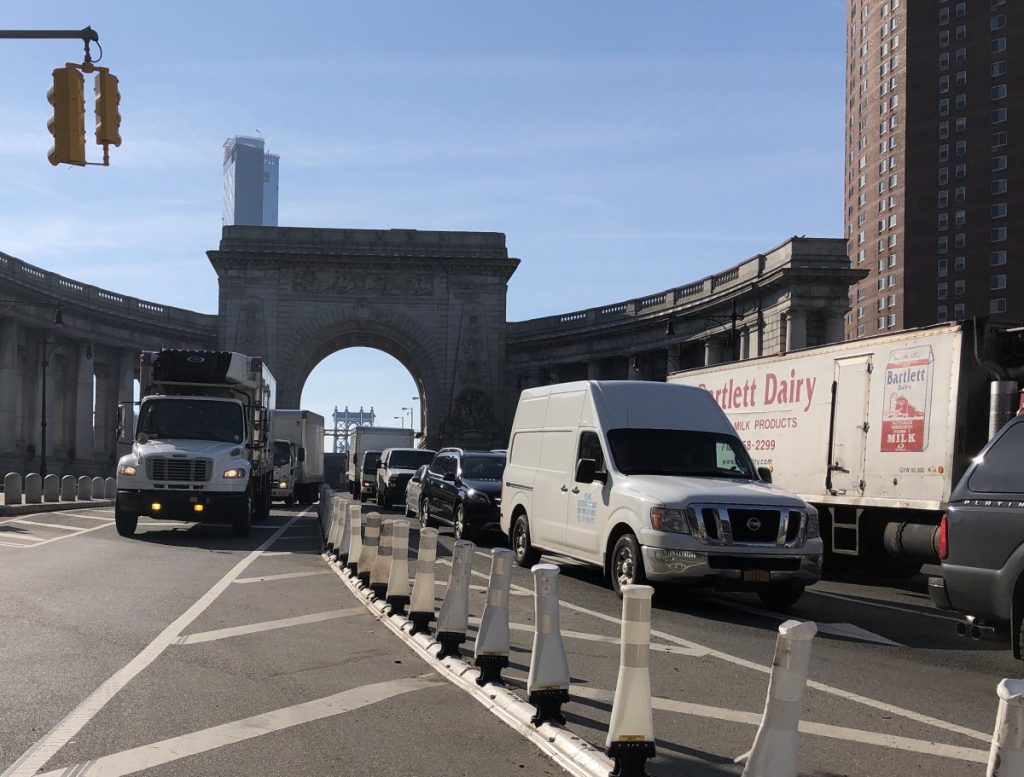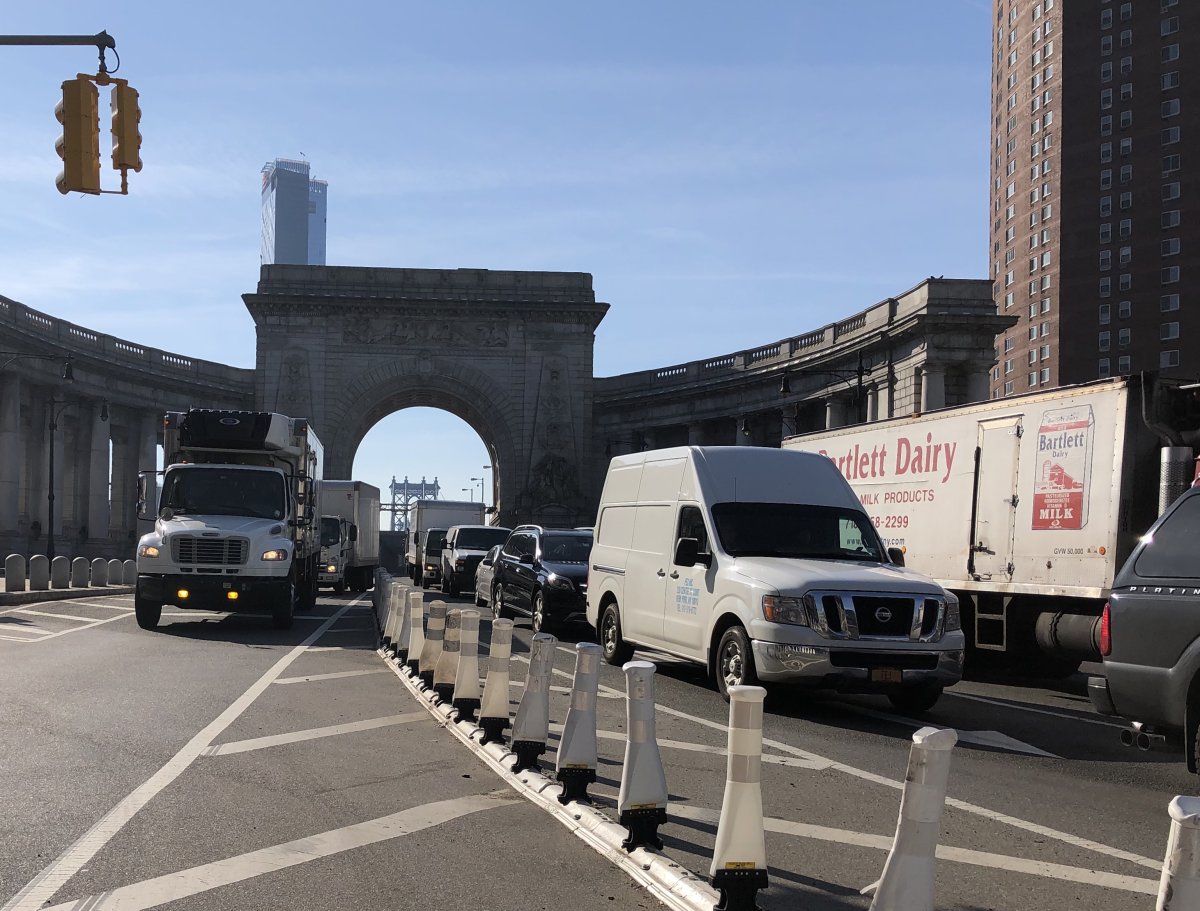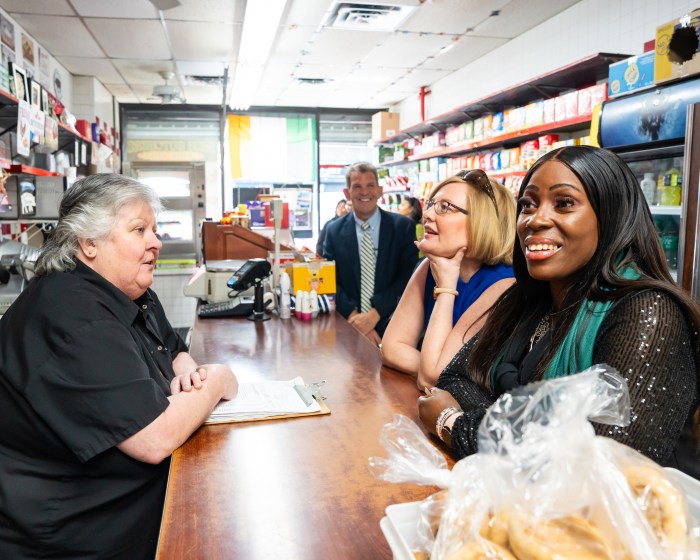For more than a decade now, the movement to institute congestion pricing in New York City has been proposed, debated and ultimately killed over and over again. But this time, it appears that the hotly debated proposal is finally going to become a reality.
As we went to press this week, it was reported that Democrats in the state Legislature appeared to have enough votes in favor of congestion pricing to include it in the budget that’s still being hammered out. Lawmakers have until Mon., April 1, to get a budget deal done.

What this means is that very soon anyone crossing an East River bridge into Manhattan, or traveling south of 60th St. in Manhattan, will be charged a toll. The revenue generated from this plan will be used to fund much-needed public transit improvements — even though it’s hoped that congestion pricing will encourage more people to leave their cars at home when traveling to our borough, thereby reducing traffic volume.
The assumption, of course, is that most Manhattanites will support this plan. After all, it’s being done because of the insane gridlock we are increasingly experiencing on our streets. Why anyone would even want to drive, take a cab or hop into an app-hail car during midday in Midtown Manhattan — or anywhere south of 60th St. — is a mystery to us. But plenty of people do it — and, as a result, have the pleasure of sitting in traffic and going nowhere fast as CitiBike riders whiz by them. To each his or her own.
Yet, there are concerns for Manhattanites about this plan. For example, will people just park on the edge of the zone, then take mass transit or a cab or ride-share car into the zone? Again, as with the infernal traffic, would commuters and others be dumb/crazy enough to try to park in Manhattan, given that parking here is already so difficult? State Senator Brad Hoylman, however, for one, does think residential parking permits would be needed to offset this potential influx.
In addition, Hoylman feels that Manhattan dwellers should “get a discount” when they pass in or out of the zone. In addition, he feels there should only be a one-way toll — for people entering the zone — since leaving the zone (i.e., lessening congestion here) is the idea. Some say “equity” is needed — that the toll should be two-way — but we strongly disagree. It’s simply counterintuitive. Hoylman’s ideas, in general, are spot-on on this issue.
Definitely, buses need all the help they can get. Buses, like most of the other traffic on the borough’s streets, often move at a snail’s pace. The M14 is one of the city’s slowest lines, according to the Bus Turnaround Coalition.
Community Board 3 (East Village / Lower East Side) has not taken a position on a traffic tax yet. That might be because the Lower East Side does not have great transportation, and some people really do rely on cars there. Plus, there is a fair amount of back and forth with Brooklyn, and shopping districts on the LES want the traffic.
But Community Board 2 (Greenwich Village, Soho, Little Italy, Chinatown) is strongly for congestion pricing. A resolution this Jan. 29 by C.B. 2 said the board supports the concept because “…traffic congestion on our streets has increased exponentially over the last several years, with an additional 150,000 for-hire vehicles flooding our streets, resulting in increased noise and air pollution, hazardous conditions for pedestrians, drivers and bicyclists alike, and high costs to business.”
In addition, the Board 2 resolution noted, the M.T.A. simply desperately needs this cash infusion, but it must go into a “locked box” for transportation.
As for complaints that bike lanes and bus lanes are causing the traffic — let’s face it, the buses are way too slow, so more dedicated lanes for them are what’s needed, and bike lanes are also essential: Bike lanes encourage healthy activity and health over all, bikes don’t pollute and they are far, far less dangerous than cars to pedestrians, other bikers and other drivers. There should not be a rollback on bike lanes. That ship has sailed, to mix metaphors. Bikes are also just one of the fastest and most convenient ways to get around, especially in densely packed Manhattan, where nothing is really that far away — but where gridlock and transit woes make trips so much longer than they should take.
Meanwhile, the other boroughs have been more strongly opposed to congestion plans and bridge tolls. Queens, in particular, is known for having inadequate mass transit.
The woeful state of the city’s public transit system, combined with the stark increase in traffic volume in recent years, has made congestion pricing a necessary evil in the eyes of many. But it needs to come with changes for the Metropolitan Transportation Authority and for commuters from the other boroughs alike.
For one thing, the M.T.A. must do more to trim the fat from its corporate budget.
The overhead in the M.T.A. is staggering; more than one-quarter of all its employees earn in excess of $100,000 a year at a time that the authority faces an unprecedented deficit. Leadership must be held accountable to cut costs as the public is asked to pay more for improvements.
For this plan to be truly palatable to all New York City residents, the city and state must follow through with the promise to use that revenue solely on public transportation improvements — and those improvements must begin almost immediately.
Funds from congestion pricing will be used to improve ferry service, in addition to bus service.
The city and M.T.A. must also fully fund Mayor Bill de Blasio’s Bus Forward initiative. S.B.S. allows for larger buses, off-board fare collection and dedicated bus lanes, all of which aim to move commuters around more quickly.
The congestion pricing plan must also serve to provide a down payment for the future of public transportation.
If congestion pricing is going to work for New York City, then the city and state must keep their promise, and it must be an unshakable, unconditional pact.
For this “tax” on drivers, the city must finally provide all New Yorkers with a modern, efficient public transportation system.


















